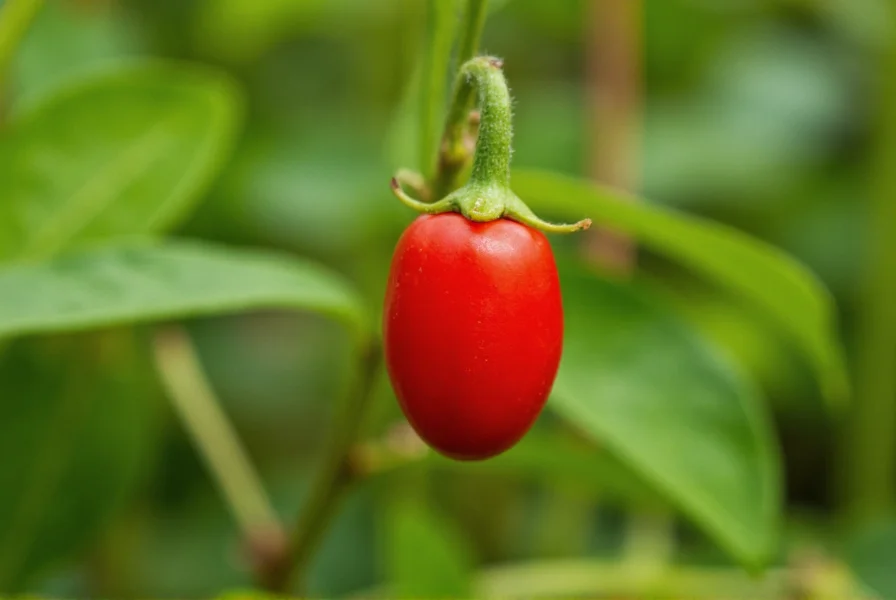When home cooks and chefs mention \"little peppers,\" they're usually talking about compact chili varieties that pack a powerful punch despite their small size. These miniature powerhouses have become essential ingredients in global cuisines, from Southeast Asian curries to Mexican salsas. Understanding their characteristics helps home cooks use them effectively while avoiding unexpected heat levels.
Common Little Pepper Varieties
Several small chili varieties fall under the \"little pepper\" category, each with distinct flavor profiles and heat levels. The most widely used include:
| Pepper Variety | Size (inches) | Scoville Units | Flavor Profile |
|---|---|---|---|
| Thai Bird's Eye | 1-2 | 50,000-100,000 | Grassy, citrusy, intense heat |
| Pequ\u00edn | 0.5-1.5 | 30,000-60,000 | Smoky, nutty, moderate heat |
| Friggitello | 2-4 | 100-500 | Sweet, mild, bell pepper-like |
| Chiltepin | 0.2-0.8 | 50,000-100,000 | Earthy, smoky, intense heat |
Understanding Little Pepper Heat Levels
Despite their diminutive size, most little peppers deliver substantial heat. The Scoville scale measures capsaicin concentration, with Thai bird's eye and chiltepin peppers ranking significantly hotter than jalape\u00f1os (2,500-8,000 SHU). When working with these small but potent peppers, remember that heat concentration varies based on growing conditions, with stressors like drought increasing capsaicin production.
For safe handling of little pepper varieties, always wear gloves and avoid touching your face. The seeds and white membranes contain the highest concentration of capsaicin, so removing these reduces heat substantially. When cooking with little peppers, add them early for infused heat or later for brighter, more pronounced flavor.

Culinary Applications of Little Peppers
Little peppers excel in applications where intense heat without overwhelming volume is desired. Thai bird's eye chilies form the backbone of Southeast Asian cuisine, essential in dishes like Thai green curry and Vietnamese pho. Their small size allows even distribution throughout dishes without large, distracting pieces.
Pequ\u00edn peppers shine in Mexican cooking, particularly in adobos and salsas where their nutty flavor complements roasted ingredients. Many professional chefs prefer little peppers for infused oils and vinegars because their high surface-area-to-volume ratio extracts flavor efficiently. When substituting little peppers in recipes, consider both heat level and flavor profile to maintain dish integrity.
Growing Little Pepper Varieties
Gardeners increasingly cultivate little pepper varieties due to their compact growth habits and high yields. Most small chili plants thrive in containers as small as 5 gallons, making them suitable for patios and balconies. For optimal growth, provide 6-8 hours of direct sunlight, well-draining soil, and consistent moisture without waterlogging.
Little pepper plants typically mature in 70-90 days from transplanting. Harvest peppers when they reach full color (usually bright red) for maximum heat and flavor, though many varieties can be used green. Regular harvesting encourages continued production throughout the growing season. In cooler climates, grow little peppers as annuals or bring containers indoors before first frost.

Storage and Preservation Techniques
Preserving little peppers extends their culinary usefulness beyond harvest season. For short-term storage, keep unwashed peppers in a perforated plastic bag in the refrigerator crisper drawer for 2-3 weeks. For longer preservation, consider these methods:
- Drying: String whole peppers or dehydrate slices at 135\u00b0F for 8-12 hours until brittle
- Freezing: Freeze whole peppers on a tray before transferring to airtight containers
- Vinegar preservation: Create quick-pickled little peppers in 50/50 vinegar-water solution
- Oil infusion: Submerge dried peppers in olive oil with garlic for flavored oil
Dried little peppers maintain potency for 1-2 years when stored in airtight containers away from light. Rehydrate dried peppers by soaking in hot water for 20 minutes before use in sauces and stews.
Frequently Asked Questions
What's the difference between Thai bird's eye chili and pequ\u00edn pepper?
Thai bird's eye chilies have a brighter, more citrusy flavor with intense heat (50,000-100,000 SHU), while pequ\u00edn peppers offer a nuttier, smokier profile with moderate heat (30,000-60,000 SHU). Thai varieties grow upright on the plant, whereas pequ\u00edns hang downward. Both work well in hot sauces, but Thai chilies suit Southeast Asian dishes while pequ\u00edns complement Mexican cuisine.
How can I reduce the heat of little peppers in cooking?
To reduce heat from little peppers, remove all seeds and white membranes (placenta) where capsaicin concentrates. Soaking sliced peppers in salt water for 15-20 minutes draws out some capsaicin. Adding dairy products like yogurt or coconut milk to dishes counteracts heat chemically. For infused oils, use fewer peppers or shorten infusion time. Remember that cooking doesn't destroy capsaicin, so add little peppers later in cooking for milder heat.
Can I substitute little peppers in recipes calling for jalape\u00f1os?
Yes, but with significant adjustments. Since most little peppers are 5-20 times hotter than jalape\u00f1os, use only 1/4 to 1/2 the amount. For recipes requiring mild heat, consider milder little pepper varieties like friggitellos. When substituting Thai bird's eye or pequ\u00edn peppers, balance with additional sweet or acidic elements to maintain flavor harmony. Always taste as you go when adjusting heat levels in recipes.
Why do little peppers seem hotter than larger chili varieties?
Little peppers often have higher capsaicin concentration per unit volume because they've evolved to deter small predators while still attracting bird pollinators. Their compact size means less water content relative to capsaicin-producing tissues. Environmental stressors like limited water or nutrients increase capsaicin production as a defense mechanism. Additionally, many popular little pepper varieties belong to the Capsicum frutescens species, which naturally produces more capsaicin than the Capsicum annuum species of larger peppers.











 浙公网安备
33010002000092号
浙公网安备
33010002000092号 浙B2-20120091-4
浙B2-20120091-4